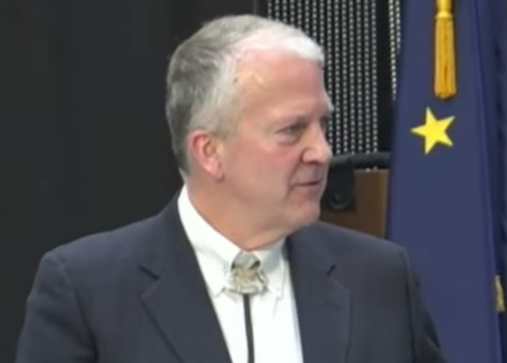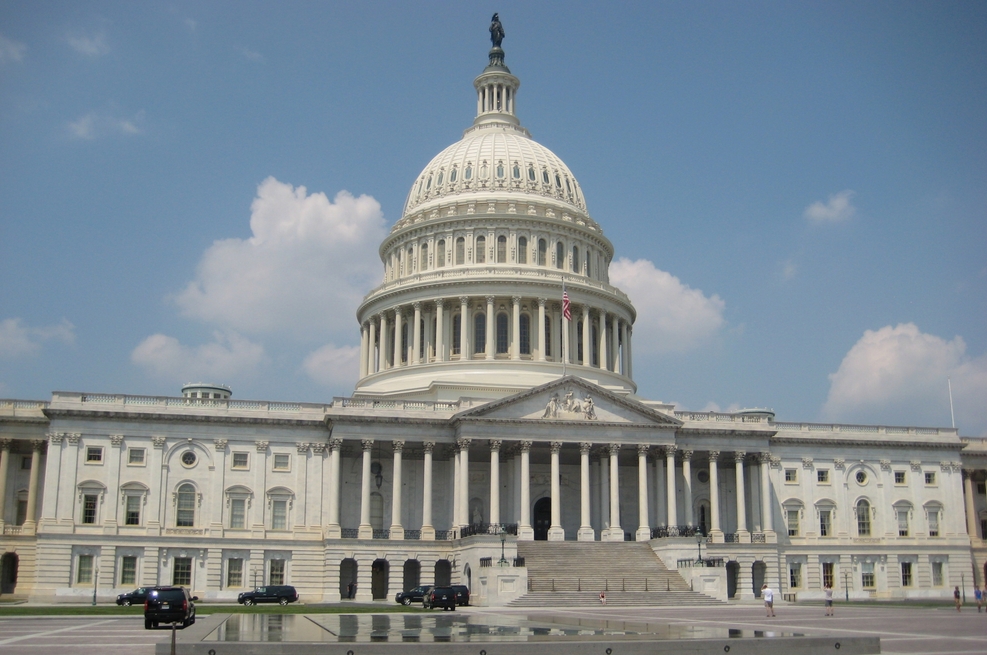Local governments, non-governmental organizations, and a tribe are the recipients of $404,124 in Alaska Clean Water Actions (ACWA) grants last Thursday. The ACWA partnership between the Departments of invironmental Conservation, Fish and Game, and Natural Resources awarded 15 grants to assist the State
in its clean water objectives.
The grants focus efforts on waters that are in greatest need of protection and restoration.
“Year after year, ACWA grants help conserve, protect and restore Alaska’s waters in areas that need it most,” said Michelle Bonnet, Director of DEC’s Water Division. “Through the hard work of the grantees, waters in need will be addressed for the benefit of all Alaskans.”
One of the projects to receive funding will allow the Juneau Watershed Partnership and the Department to develop a water quality monitoring program for petroleum hydrocarbons in Auke Lake in Juneau. In addition to the monitoring, Juneau Watershed Partnership will partner with the city to conduct a recreational user survey to gain information on motorized and nonmotorized use on the lake in order to assess potential pollution sources. Another project in the Matanuska-Sustina Borough will fund a third year of research on stormwater runoff and its effects on water quality and fish habitat in Wasilla, Cottonwood and Little Meadow Creeks. The project will determine what portions of the creeks are being impacted by the runoff and the extent of the impact.
ACWA grants are balanced between projects that protect water quality and ones that restore waters considered polluted or impaired. The grant funds come from a combination of federal water quality grants, beach environmental assessment grants, and coastal health grants.
For more information about ACWA and the list of priority waters and actions, visit: www.dec.state.ak.us/water/acwa/acwa_index.htm.
Below are summaries of the Alaska Clean Water Actions (ACWA) Grants for projects starting in July 2012 and finishing in June 2013. The summaries are arranged by region of the state and include the contact information for the group conducting the project.
Southeast Region
Auke Lake Water Quality Monitoring
Juneau Watershed Partnership (JWP), $19,000
This project addresses an ACWA Waterbody Protection priority. Auke Lake is a freshwater lake located approximately 12 miles north of downtown Juneau, Alaska. Auke Lake is a popular site for motorized summer recreation. JWP, in close coordination with the DEC, will develop and implement a water quality monitoring program for Auke Lake to collect data on petroleum hydrocarbon concentrations as compared to the Alaska Water Quality Standards. This data will be used to assess the summer pollutant loading to the lake primarily due to two-stroke engine use. To aid in the assessment, JWP will partner with the City and Borough of Juneau to conduct a recreational user survey designed to collect information on the motorized and non-motorized use on the lake. JWP will evaluate the water quality data and survey results and present them in a final project report. Contact: Eric Norberg, (907) 586-6853.
Juneau BEACH Monitoring Program – Year 2
Juneau Watershed Partnership (JWP), $22,229
This project addresses an ACWA Stewardship priority. JWP, in cooperation with the City and Borough of Juneau and the U.S. Forest Service, Tongass Ranger District, will monitor Auke Lake Recreation Area, Lena Cove, and Ann Coleman Road beaches for fecal bacteria pollution to evaluate possible risk to recreational users. These Juneau area beaches were identified by DEC as high priority because they are commonly used for contact recreation activities. Any events where bacterial levels exceed public health criteria will be evaluated for possible sources. If chronic bacterial exceedances are detected, further work may be necessary to confirm sources of pollution and prepare mitigation plans for affected areas, as appropriate. Contact: Erik Norberg, (907) 586-6853.
Klag Bay Educational Outreach
Alaska Environmental Restoration and Research, $8,400
This project addresses an ACWA Waterbody Restoration priority. The project implements activities identified in the Klag Bay total maximum daily load (TMDL) designed to increase public awareness of contaminants in the sediment of the Klag Bay area. The project involves posting large signs about the contaminants in the Klag Bay area developing. The signs will help to increasepublic awareness of the potential dangers of consuming shellfish that have been harvested from the contaminated sediment of Klag Bay. This project will be coordinated with the other Klag Bay project. Contact: Alex Strawn, (907) 355-5395
Klag Bay Contamination Public Awareness Project
Sitka Tribe of Alaska, $5,400
This project addresses an ACWA Waterbody Restoration priority and implements activities identified in the Klag Bay total maximum daily load (TMDL). The project creates an awareness brochure to use at a public outreach meeting in Sitka. The brochure will also be distributed to surrounding southeast Alaska communities, state and federal agencies. This project will be coordinated with the other Klag Bay project. Contact: Ted Wright, (907) 747-7380
Monitoring Bacteria Levels on Haines Beaches FY13
Takshanuk Watershed Council, $17,000
This project addresses an ACWA Stewardship priority. Beaches in the Haines area are increasingly used for recreation during the summer months as the long days draw both local residents and tourists to the beach for a variety of activities. This project will include fecal bacteria monitoring at two recreational beaches in the Haines Borough – Portage Cove and Lutak Beach. These beaches were identified by DEC as high priority because they are commonly used for recreation activities where people come in contact with the water. Through this project, the Takshanuk Watershed Council will (1) conduct a second year of bacteria water quality monitoring, (2) increase public awareness of potential bacterial sources and the health risks associated with bacterial contamination, and (3) work with the Haines Borough to limit beach access in the event of significant bacterial exceedances to ensure public health is protected. Contact: Brad Ryan, (907) 766-3542.
Mosquito Lake Water Quality and Invasive Plants
Takshanuk Watershed Council, $15,000
This project addresses an ACWA Waterbody Protection priority. Mosquito Lakeis located in the Haines Borough and is an important recreational lake thatprovides habitat for bald eagles, trumpeter swans, coho and sockeye salmon, cutthroat and steelhead trout, Dolly Varden char, and whitefish. Suspected invasive plants such as Eurasian milfoil have been reported in the lake. This project will investigate the extent of milfoil coverage on the lake and conduct a feasibility study to determine the best approach to eradicate the milfoil as needed. The project will also conduct basic water quality monitoring, including monitoring for fecal coliform bacteria, and nutrients that may be linked to the excessive plant growth. A final project report of all results will be submitted. Contact: Brad Ryan, (907) 766-3542.
Pederson Hill Water Quality Monitoring
Juneau Watershed Partnership (JWP), $9,907
This project addresses an ACWA Waterbody Restoration priority. Pederson Hill Creek, located in Juneau, is included on the state list of impaired waters for contamination from fecal coliform bacteria. A total maximum daily load (TMDL) was established for the watershed in 2008. Failing septic systems were identified as the probable source of the pollution. Since the TMDL was issued, some of the area surrounding the creek has been connected to the City and Borough of Juneau’s wastewater treatment system. JWP, in coordination with the DEC, will conduct water quality monitoring in Pederson Hill Creek to assess progress made towards waterbody recovery and meeting fecal coliform bacteria state water quality standards. A final project report of monitoring results will be submitted. Contact: Erik Norberg, (907) 586-6853.
Stormwater Master Plan and Management Guidelines
City and Borough of Sitka, $43,388
This project addresses an ACWA Stewardship priority and continues an FY12 project. The City and Borough of Sitka does not have a stormwater master plan or mapping program for protection of inland and coastal waters from stormwater runoff pollution. This project will fill that gap by (1) mapping and inventorying existing stormwater facilities; (2) identifying existing discharges, inadequate storm drains, and management measures to reduce polluted stormwater runoff; and (3) determining various maintenance, repair and design alternatives to maximize the capabilities of the stormwater system. The project also includes hydrologic modeling to estimate stormwater runoff quantities and provides for long-term environmental stewardship. Contact: Stephen Weatherman, (907) 747-4042.
South-Central
Campbell Lake Water Quality Assessment
Aquatic Restoration and Research Institute (ARRI), $26,623This project addresses an ACWA Waterbody Restoration priority. Campbell Creek and Campbell Lake are impaired water bodies with a total maximum daily load (TMDL) plan for fecal coliform bacteria. Other tributary streams to Campbell Lake are subjected to urban runoff and may be contributing additional pollutants that prevent water quality recovery in Campbell Lake. In particular, DEC has identified a specific tributary to Campbell Lake that may be water quality impaired. This small tributary receives runoff from commercial, industrial, and residential development. DEC has investigated the presence of orange floc of unknown origin. The tributary may also be contributing fecal coliform bacteria to Campbell Lake. The objective of this study is to determine if concentrations of fecal coliform bacteria and the abundance of organic floc in this small tributary exceed the state water quality standards through water quality sampling and assessment. A final project report of monitoring results will be submitted. Contact: Jeff Davis, (907) 733-5432.
Clean Boating on Big Lake
Cook Inletkeeper, $15,585
This project addresses an ACWA Waterbody Restoration priority and continues an FY12 project. Big Lake is a popular recreational lake in the Mat-Su Borough and an important economic asset to the Big Lake community. In 2006, Big Lake was listed as impaired (polluted) for petroleum hydrocarbons that exceeded state water quality standards. The source of the pollution is gasoline powered watercraft. Beginning in 2010, local community members and other stakeholders of Big Lake developed an Action Plan for reducing pollution in Big Lake through targeted public outreach and education. Using the Big Lake Action Plan as a guide, this project will address the goal of reducing pollution in Big Lake through a comprehensive educational clean boating campaign. This project has three objectives: (1) develop and implement an educational clean boating program to ensure that boaters have locally available resources, know how to practice clean boating skills, and have an understanding of the negative impacts of petroleum on human health and fish habitat; (2) empower campground hosts and local business owners to encourage “Clean Boating on Big Lake”; and (3) implement best management practices to institutionalize pollution reduction practices under the Alaska Clean Harbors program at Big Lake marinas. Contact: Rachel Lord, (907) 235-4068 ext. 29.
Kenai River Watershed Monitoring
Kenai Watershed Forum, $28,272
This project addresses an ACWA Waterbody Protection priority and continues an FY12 project. The Kenai River is one of the premier commercial and sportfishing rivers in south-central Alaska. Water quality monitoring is an important aspect of river management that ensures water quality is maintained. This project continues the cooperative multi-agency effort for annual petroleum hydrocarbon sampling in the Kenai River watershed including 11 sites on the mainstem of the Kenai River and sites on 11 tributaries just upstream from where they enter the Kenai River during the peak power boat usage period. This water quality monitoring effort will verify that the Kenai River Waterbody Recovery Plan continues to be effective and that water quality standards continue to be met. A final project report of all data collected will be submitted. Contact: James Czarnezki, (907) 260-5478.
Kenai River Bacteria Monitoring,
City of Kenai, $61,566
This project addresses an ACWA Stewardship priority and continues FY12 work. Elevated levels of enterococci and fecal coliform bacteria were measured in samples at the mouth of the Kenai River. This project will monitor and test for bacteria at two locations at the mouth of the Kenai River (one site on the North Beach and one site on the South Beach) and at one upriver location near the Warren Ames Bridge (River Mile 5) to see if the beach management improvements have reduced the bacteria levels. Contact: Rick Koch, (907) 283-8222.
Mat-Su Stormwater Assessment
Aquatic Restoration and Resources (ARRI), $79,825
This project addresses an ACWA Stewardship priority and continues an FY11/12 project. The project continues work needed to collect data on Wasilla Creek, Cottonwood Creek and Little Meadow Creek to assess the effects of urbanization on water quality and fish habitat. All three creeks are important for salmon spawning and rearing. Wasilla Creek supports coho, Chinook, and chum salmon, and both Cottonwood Creek and Little Meadow Creek are lakestream systems important for the spawning and rearing of sockeye salmon, coho salmon and resident rainbow trout. The project will (1) investigate where polluted stormwater impacts are occurring in the target waters, (2) assess the degree and extent of these impacts, and (3) determine what pollutants are of most concern and what the effects are to fish habitat. The information gained is critical to understanding the impacts of pollutants transported by urban stormwater runoff on these salmon streams and will assist resource managers in making effective and targeted decisions to protect these fisheries from polluted stormwater runoff. Contact: Jeff Davis, (907) 733-5432.
Stream Temperature Monitoring Network – Cook Inlet
Cook Inletkeeper, $44,929
This project addresses an ACWA Stewardship priority and will complete a 5-year project. Water temperature is one of the most significant factors in the health of stream ecosystems. For salmon specifically, temperature affects survivorship of eggs and fry, rate of respiration and metabolism, timing of migration, and resistance to disease and pollution. Temperature plays a critical role in salmonid habitat protection, reproduction and survivorship. Wild, healthy salmon support vital sport, commercial, subsistence and personal use fisheries across Alaska. Therefore, the project addresses an urgent need to assess temperatures in Alaska salmon habitats. This project will (1) complete the final year of consistent data collection for the Stream Temperature Monitoring Network on 44 streams including Alexander Creek, Beaver Creek, Bishop Creek, Byers Creek, Cache Creek, Chenik Creek; Chester Creek, Chijuk Creek, Cottonwood Creek, Crooked Creek, Deception Creek, East Fork Chulitna River, English Bay River, Fish Creek, Fox Creek, Funny River, Hidden Creek, Jim Creek, Kroto (Deshka) Creek, Little Willow Creek, McNeil River, Meadow Creek, Montana Creek, Moose Creeks (Palmer & Talkeetna), Moose River, NF Campbell Creek, Nikolia Creek, Quartz Creek, Rabbit Creek, Resurrection Creek, Seldovia River, Shantatalik Creek, Ship Creek, Silver Salmon Creek, Slikok Creek, Soldotna Creek, Swanson River, Theodore River, Trapper Creek, Troublesome Creek, Wasilla Creek, and Willow Creek; (2) analyze 2012 temperature data to establish natural conditions; and (3) complete a comprehensive analysis of the 5-year data set collected. The Cook Inlet Stream Temperature Monitoring Network will allow fisheries managers and land-use planners to identify watershed characteristics with the greatest potential to buffer salmon habitats from high air and water temperatures. This project provides the knowledge and data needed to prioritize sites for future research, protection and restoration actions. Contact: Sue Mauger, (907) 235-4068 ext.24.
Little Susitna River Conservation
Palmer Soil and Water Conservation District (PSWCD), $7,000
This project addresses an ACWA Waterbody Protection priority and continues an FY12 project. The lower Little Susitna River is at risk of water quality impairment from petroleum hydrocarbon pollution and turbidity. This project continues the educational campaign on the impacts of petroleum and turbidity pollution to aquatic species and ways to reduce this pollution. The outreach campaign will build off DEC’s current “Fuel Out – Fish On!” outreach message by distributing educational pamphlets at key locations in the Mat-Su area. In addition, one-on-one education of users of the lower Susitna River recreational fishery will be achieved by conducting three outreach weekends during the height of the coho fishery at the State-operated public use facility and boatlaunch. The goals of the project include improved water quality through a more educated boating public. A final project report summarizing results will be provided. Contact: Eric Wade, (907) 745-1441.
Source:DEC






